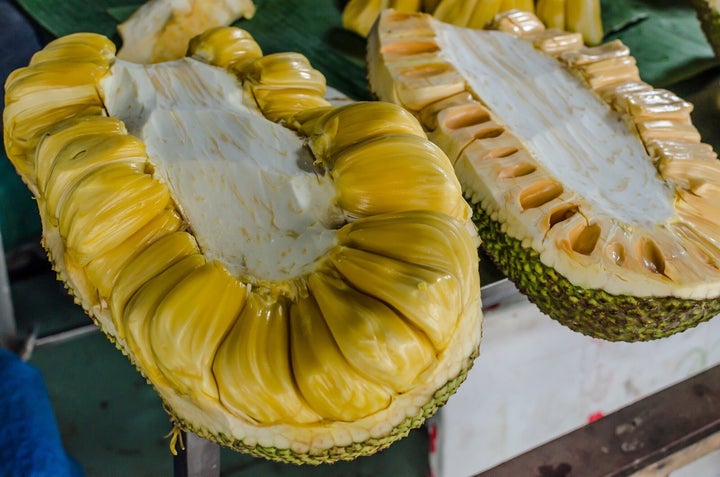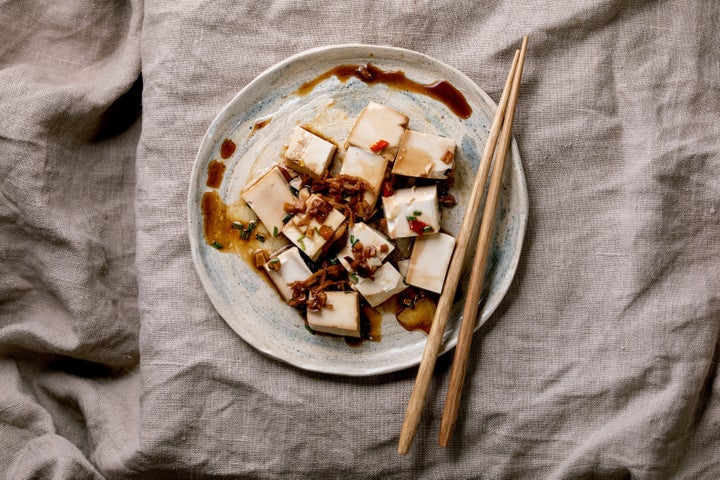In an effort to protect the environment, many of us have started whipping up a tofu stir fry on the regular and chowing down on the popular Impossible Burger in place of a traditional beef hamburger patty.
You’re on the right track if you’re doing this. Environmental experts agree that eating any type of meat substitute is, without a doubt, better for the environment than meat.
“The single biggest step that will significantly reduce our environmental impact of the food we eat and grow is to ensure that we consume more plant-based proteins within our diets,” Mark Driscoll, a sustainability expert and founder of the consultancy Tasting the Future, told HuffPost. “Our food system contributes up to 34% of global human-made greenhouse gas emissions, uses 70% of all freshwater and has been the main driver behind the loss of 60% of our biodiversity over the last 40 years. Conversion of protein from feed crops into animal protein for human consumption is inherently resource-inefficient.”
That being said, there are a lot of meat substitutes on the market. There’s tofu, which has been around for decades, beans, which can be easily ground up and made into a burger patty, and newer, trendier Impossible and Beyond Meats. In other words, we have options. But when it comes to the environment, these options are not all created equal.
We had sustainability experts grade the most popular meat alternatives. One thing to keep in mind as you go through the grades: A “C” for a plant-based product is still better for the environment than the best industrially-farmed animal meat, the experts said.
Beans: A
Lentils and black beans are commonly used as a base for veggie burgers. If you like the flavor, you’re in luck, because choosing beans as your protein source is a great decision from an environmental standpoint.
“Using beans, lentils and other legumes in burgers is about as environmentally friendly as you can get,” Isaac Emery, founder and principal consultant at Informed Sustainability Consulting, said. “Legumes need much less fertilizer than other crops and don’t need to be processed.”
Driscoll echoed this, saying that beans are “undoubtedly the stars of the show. This is particularly true if grown organically,” he said. “With high levels of protein and fiber, they are legumes and therefore add nitrogen back to soils and contribute to soil health.”

Jackfruit: B
A tropical tree fruit, jackfruit is relatively sustainable as long as pesticides and herbicides are not used, according to Driscoll. “The trees do not require irrigation and it’s a shade crop that can be intergrown with other crops to create a regenerative ecosystem,” he explained. “Trees grown in silvicultural systems mean that carbon is extracted from the atmosphere, so there is some impact from emissions as a result of transportation.”
Seitan: B
Because seitan is derived from wheat, its sustainability depends on the way it’s grown, Driscoll explained. “A lot of wheat is grown using a mix of agrochemicals and pesticides. which can contaminate watercourses and damage biodiversity and insect pollinators,” he said.
Emery is a bigger fan of seitan, saying the fact that farmers can grow winter wheat and spring wheat on the same field in one year makes it a good use of land.

Tofu: C
Tofu is made from soya, or soy. The demand for soy has been linked with deforestation, according to the World Wildlife Foundation, as it can generate greenhouse gas emissions without the proper practice. Soy production tends to use a significant amount of water and pesticides, according to Driscoll, hence its not-so-stellar grade.
Tempeh: C
While not terrible for the environment, tempeh, a meat substitute made of fermented soybeans, isn’t super sustainable because the fertilizer it’s grown in often contains pesticides. “Transportation adds to the carbon footprint too,” Driscoll said.
Impossible and Beyond: C (and up)
Popular as they may be, Impossible products rank low on the list of meat substitutes from a sustainability standpoint. “They are undoubtedly better for the environment than beef,” Driscoll noted. “These products use significantly less water, land and fossil fuel emissions than beef.”
That being said, soy is a key ingredient of Impossible products, in particular. “Unless soy is produced using organic systems, soy can use significant quantities of pesticides,” Driscoll said.
Note: Beyond Meat products, on the other hand, are made with pea protein instead of soy, earning a slightly higher ranking.
A reason people love these products so much is that they mimic the texture of animal meat, Emery pointed out. But getting that texture means more processing. “That means their environmental footprint is tied to the environmental footprint of energy, and not just farming,” he said. “As our energy system gets more environmentally friendly, so will these products.”
Sure, some of these plant-based meat substitutes are better than others. But the most important thing to keep in mind is that by foregoing meat, you’re doing the environment a big favor.






